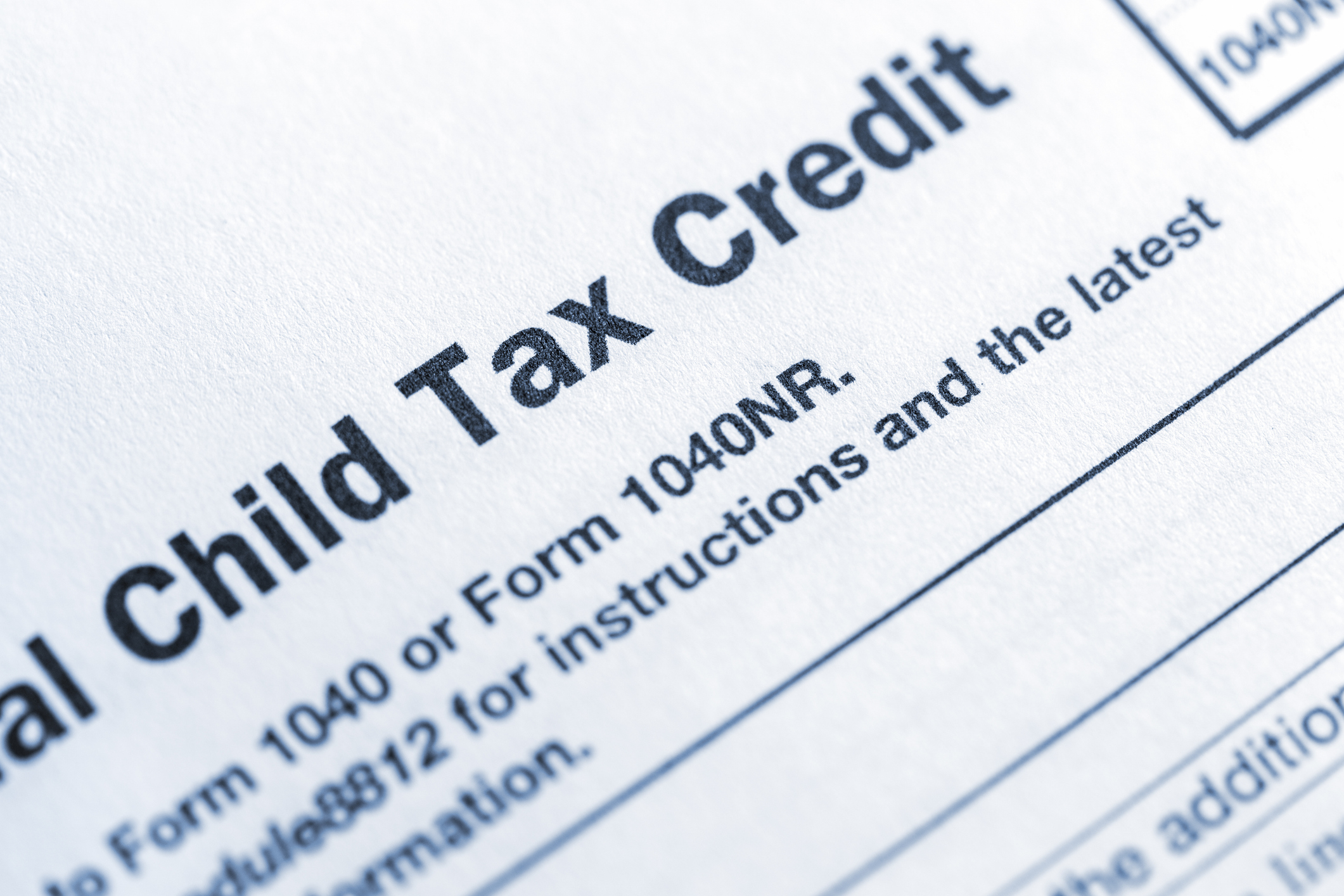6 Tax Breaks for College Costs
Several tax breaks can ease the financial blow of college costs, whether you’re saving to send your kids to college, paying tuition bills for a child or yourself, pursuing graduate work, or repaying college loans.


Several tax breaks can ease the financial blow of college costs, whether you’re saving to send your kids to college, paying tuition bills for a child or yourself, pursuing graduate work, or repaying college loans. And some new tax laws have changed the rules and expanded some breaks for education. The following six tips can help you take full advantage of these tax breaks.

The American Opportunity Tax Credit
- The American Opportunity Tax Credit is worth up to $2,500 per student for each of the first four years of college. The student must be enrolled at least half-time for one academic period during the year in a program leading to a degree, certificate or other recognized educational credential.
To qualify for the full credit, your adjusted gross income must be less than $80,000 if you are single or filing as head of household, or less than $160,000 if you are married filing jointly. The size of the credit starts to phase out as your income rises, disappearing entirely for singles and heads of household earning more than $90,000, and for couples filing jointly earning more than $180,000. Money spent on tuition, fees and books (but not room and board) counts toward the credit.
The credit is worth 100% of the first $2,000 you pay for eligible expenses, plus 25% of the next $2,000, totaling $2,500 for each of the four years. You can claim the credit by filing IRS Form 8863 with your Form 1040. Also see IRS Publication 970, Tax Benefits for Education for details.

The Lifetime Learning Credit
The Lifetime Learning Credit is much more flexible than the American Opportunity Tax Credit. There is no limit to the number of years you can claim the credit, and the course must either be part of a postsecondary degree program or be taken to acquire or improve job skills. The course must be offered by an eligible educational institution, such as any college, university, vocational school or other postsecondary educational institution eligible to participate in the U.S. Department of Education student aid program.
- The Lifetime Learning Credit is worth 20% of the first $10,000 of tuition, for a maximum of $2,000 per tax return. To qualify for the full credit in 2018, your income must be less than $57,000 if single or filing as head of household, or $114,000 if you’re married filing jointly. The credit phases out entirely for singles and heads of household who earn more than $67,000 and for joint filers who earn more than $134.000.
You claim this credit by filing IRS Form 8863 with your 1040. For more information about the rules, see IRS Publication 970, Tax Benefits for Education.

529 Savings Plans
Sponsored by 49 states and the District of Columbia, 529 plans let your earnings escape federal tax completely if the withdrawals are used for qualified college expenses, including tuition, fees, room and board, books and even a computer for the student. Two-thirds of states give residents a tax deduction or another tax break for contributions. You are permitted to invest in other states’ 529 plans, although to get the tax break, you'll usually need to invest in your home state.
The appeal of 529 plans lies in their easy access as well as their tax benefits. The plans set no income limit and have a high limit on contributions. If your kid skips college, you can change the beneficiary to a sibling or other relative without losing the tax break. But use the money for non-college expenses and you’ll be on the hook for taxes and a penalty on earnings.
And starting in 2018 you can also withdraw up to $10,000 per student each year tax-free to pay tuition for kindergarten through 12th grade. (There’s no dollar limit on withdrawals for college costs.)
For more information about which 529 plan is best for you (your state of residence can make a big difference), see The Best College Savings Plans, 2017.

Tax-Free Savings Bonds
- If you redeem I bonds and EE bonds issued after 1989 to pay college tuition, you may not have to pay taxes on the interest you earned. To qualify for the tax break, the bond owner must use the money to pay qualified education expenses (tuition and required fees, but not room and board) for himself, his spouse or a dependent. The bond owner must have been at least 24 years old when the bond was issued. That means the bonds must generally be owned by the parent, not the child. The child can be a beneficiary of the bonds but can’t be a co-owner.
For the interest to be tax-free, you must also meet certain income criteria. For 2018, the exclusion is phased out completely if your income is $147,250 or more for joint returns, and $93,150 or more for single and head of household returns. For all of the interest to be tax-free, your modified adjusted gross income must be less than $117,250 for joint returns and less than $78,150 for single and head of household returns. For more information, see TreasuryDirect’s Using Savings Bonds for Education factsheet.

The Student-Loan Tax Deduction
Up to $2,500 in student-loan interest can be tax-deductible for 2018 if your modified adjusted gross income is less than $65,000 if you’re single or less than $135,000 if married filing jointly. The deduction phases out as your income rises, disappearing completely if you earn more than $80,000 if single or more than $165,000 if filing a joint return.
You do not have to itemize your deductions to qualify, but you can’t be claimed as a dependent on your parents’ tax return. You may even be able to deduct the interest your parents paid on a loan for which you are liable. For more information, see IRS Publication 970, Tax Benefits for Education

Scholarships
- Scholarships are tax-free up to the cost of tuition and course-related expenses, such as books and supplies. Money for anything else not required for enrollment, including housing and travel, is taxed as income. And any scholarship money received as payment for services, such as teaching or assisting in a lab, may be taxed.
Profit and prosper with the best of Kiplinger's advice on investing, taxes, retirement, personal finance and much more. Delivered daily. Enter your email in the box and click Sign Me Up.

As the "Ask Kim" columnist for Kiplinger's Personal Finance, Lankford receives hundreds of personal finance questions from readers every month. She is the author of Rescue Your Financial Life (McGraw-Hill, 2003), The Insurance Maze: How You Can Save Money on Insurance -- and Still Get the Coverage You Need (Kaplan, 2006), Kiplinger's Ask Kim for Money Smart Solutions (Kaplan, 2007) and The Kiplinger/BBB Personal Finance Guide for Military Families. She is frequently featured as a financial expert on television and radio, including NBC's Today Show, CNN, CNBC and National Public Radio.
-
 Forget FIRE: Why ‘FILE’ Is the Smarter Move for Child-Free DINKs
Forget FIRE: Why ‘FILE’ Is the Smarter Move for Child-Free DINKsHow shifting from "Retiring Early" to "Living Early" allows child-free adults to enjoy their wealth while they’re still young enough to use it.
-
 7 Tax Blunders to Avoid in Your First Year of Retirement
7 Tax Blunders to Avoid in Your First Year of RetirementA business-as-usual approach to taxes in the first year of retirement can lead to silly trip-ups that erode your nest egg. Here are seven common goofs to avoid.
-
 How to Plan for Social Security in 2026's Changing Landscape
How to Plan for Social Security in 2026's Changing LandscapeNot understanding how the upcoming changes in 2026 might affect you could put your financial security in retirement at risk. This is what you need to know.
-
 The 'Scrooge' Strategy: How to Turn Your Old Junk Into a Tax Deduction
The 'Scrooge' Strategy: How to Turn Your Old Junk Into a Tax DeductionTax Deductions We break down the IRS rules for non-cash charitable contributions. Plus, here's a handy checklist before you donate to charity this year.
-
 New IRS Changes to FSA Contribution Limits for 2026: What to Know
New IRS Changes to FSA Contribution Limits for 2026: What to KnowHealth Care Flexible Spending Accounts have tax advantages worth looking into, especially in light of new IRS changes.
-
 Is a New $25,000 Health Care Tax Deduction Coming in 2026?
Is a New $25,000 Health Care Tax Deduction Coming in 2026?Tax Policy A proposal from GOP Sen. Josh Hawley adds to the chatter about health care affordability.
-
 An HSA Sounds Great for Taxes: Here’s Why It Might Not Be Right for You
An HSA Sounds Great for Taxes: Here’s Why It Might Not Be Right for YouHealth Savings Even with the promise of ‘triple tax benefits,’ a health savings account might not be the best health plan option for everyone.
-
 How the 2025 Child Tax Credit Rules Impact Single Parents
How the 2025 Child Tax Credit Rules Impact Single ParentsTax Credits New changes to family tax credits, like the Child Tax Credit, will impact the eligibility of some households.
-
 Money for Your Kids? Three Ways Trump's ‘Big Beautiful Bill’ Impacts Your Child's Finances
Money for Your Kids? Three Ways Trump's ‘Big Beautiful Bill’ Impacts Your Child's FinancesTax Tips The Trump tax bill could help your child with future education and homebuying costs. Here’s how.
-
 Key 2025 Tax Changes for Parents in Trump's Megabill
Key 2025 Tax Changes for Parents in Trump's MegabillTax Changes Are you a parent? The so-called ‘One Big Beautiful Bill’ (OBBB) impacts several key tax incentives that can affect your family this year and beyond.
-
 2026 HSA Contribution Limits Are Set: What to Know Now
2026 HSA Contribution Limits Are Set: What to Know NowHealth Savings The IRS says Health Savings Account contribution limits will increase again next year due to inflation.
